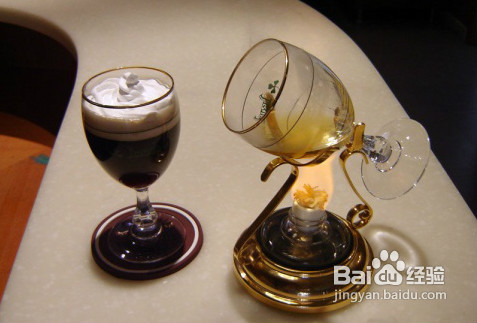Colombia Coffee Plantation with Green Tea Flavor

With rich landforms, low latitudes and high elevations, there are excellent conditions for the growth of boutique coffee. The Costa Rican coffee area, located between three and eight degrees north latitude, is a low-latitude coffee belt. It can be harvested twice a year, and ripe coffee can be harvested almost every month from south to north.
Large-scale enterprise coffee farming land is distributed in the central and northern parts of China, and it is the main producing area of commercial beans, including the three major producing areas with a long history in the middle, such as Medeine, Amenia and Medillin,Armenia,Manizales, commonly known as [MAM]. It has a strong sour taste and typical Central American flavor.
But Bucaramanca in the northeastern province of Santander is known for its low sour and bitter flavor, similar to Indonesia's Mantenin flavor, probably related to an altitude of only 960m (low altitude, low acidity, always good). Bucamanca's beans are interesting, unlike the familiar Colombian flavor. Although they are soft beans, they are full-bodied, and they don't taste like [MAM] beans with dead acid and no depth.
Costa Rica's boutique bean producing areas are mainly in the south, more than 1500 meters above sea level, including St. Augustine (San Augustin,Huila) in Vera, Popayan,Cauca (Popayan,Cauca) in Cauca, Narino (Narino), and Tolima (Tolima), with delicate sour and raspberry aromas and caramel aromas.
When buying Costa Rican beans, don't think that the highest [Supermo] of 17-18 mesh must be delicious. Be sure to check which producing area the beans come from. If the producing area is not specified, it is mostly commercial beans of [MAM], because the southern boutique producing areas will indicate the provinces and place names, so as to distinguish them.
Mo Yan once commented that Colombian coffee has the taste of Chinese green tea. Colombian coffee (Cafe de Colombia), which originated in Colombia, is one of the few individual coffees sold in the world under the name of the country. In terms of quality, it has won praise unmatched by other coffee. Compared with other producing countries, Colombia is more concerned with developing products and promoting production. It is this, coupled with its superior geographical and climatic conditions, that makes Colombian coffee excellent in quality and delicious and famous all over the world. Roasted coffee beans will release a sweet aroma, with sweet in the acid, bitter in the flat quality characteristics, because of the appropriate concentration, it is often used in high-grade mixed coffee. Colombian coffee exudes a light and elegant aroma, not as strong as Brazilian coffee, not as sour as African coffee, but a sweet fragrance, low-key and elegant.
Colombia, located in the northwest of South America, is a beautiful country with a long history. Indians have lived on this land since ancient times. It was colonized by Spain in 1531 and gained independence in 1819. It was renamed in 1886 to commemorate Columbus, the discoverer of the American continent. Colombia has beautiful mountains and rivers, beautiful scenery, pleasant climate, spring all year round and fresh air. Colombia is rich in products, especially coffee, flowers, gold and emeralds are known as the "four treasures". Today, the country is the second largest coffee producer after Brazil, the world's largest exporter of Arabica coffee beans and the world's largest exporter of washed coffee beans. Colombian coffee is often described as silky and smooth. Of all the coffees, it is the most balanced, soft, smooth and ready to drink, and it has won praise that no other coffee can match: known as "green gold".
Many people like to drink Colombian coffee, she has a silky taste, of all the coffee, it is the best balanced, soft, smooth and ready to drink. In terms of appearance and quality, the Columbia Super Class is quite excellent, just like a woman's vaguely charming, charming and just right, memorable. Colombian coffee is famous all over the world. Colombia, located in the northwest of South America, is a beautiful country with a long history. Indians have lived on this land since ancient times. It was colonized by Spain in 1531 and gained independence in 1819. It was renamed in 1886 to commemorate Columbus, the discoverer of the American continent. In 1808, a priest introduced coffee to Colombia for the first time from the French Antilles via Venezuela.
Colombia has four treasures: flowers, gold, emeralds and coffee. You can see the importance of coffee Colombia. And there may be very few coffee in the world named after a country, such as Nestle Coffee and Blue Mountain Coffee are not named after a country. Colombia is the first country to use the name of the country as a brand of coffee. Colombian coffee is famous for its quality, taste and high taste. Coffee production in Colombia plays a very important role in the country's economic life, with annual exports of about US $1.5 billion, accounting for a large proportion of its foreign trade, just as only wine produced in the champagne region of France can be called champagne. Only coffee produced in Colombia and picked by hand can be called "Colombian coffee". Colombian coffee is one of the few original coffee sold in the world under the name of the country. In terms of quality, it has won praise unmatched by other coffee. Today, Colombia is the world's third largest coffee producer and exporter, the world's largest exporter of Arabica coffee beans and the world's largest exporter of washed coffee beans.
The Colombian Coffee producers Association (Federacion Nacional de Cafeteos de Clolmbia), known as [FNC] for short in the industry, introduced the two main varieties of Colombian coffee, Kaddura and Colombia.
Kaddura, which was introduced from Brazil in the 1960s, now accounts for 45-50% of the country's output and has replaced the earliest Tibica. The new breed [Colombia], which has the same name as Colombia, is a mixed-race coffee developed in the 1980s, with Kaddura and Timo ancestry, that is, the notorious Kadim, but [FNC] insists that although Colombia is a direct line of Kadim, its flavor is far more elegant than that of ordinary Kadim, because Colombia has washed away the moldy smell of strong beans after generations of "reverse hybridization" with Arabica, and the flavor is more like Arabica. It also has the advantages of disease resistance and high yield of stout beans, which is a sharp weapon for Costa Rica to increase production.
At present, most of the Colombian manors adopt the mixed mode of 70% Kaddura and 30% Colombia, and the delicious Dibica has disappeared. The overall coffee variety configuration in Colombia is roughly 50% in Kaddura, 30% in Colombia and 20% in Tibica.
Brother
Important Notice :
前街咖啡 FrontStreet Coffee has moved to new addredd:
FrontStreet Coffee Address: 315,Donghua East Road,GuangZhou
Tel:020 38364473
- Prev

A brief introduction to the History and Culture of the Origin and Development of Colombian Coffee
Colombia is fortunate to have Atlantic and Pacific ports, which helps to reduce the cost of transporting coffee. In South America, she is the only country with this condition. The main production areas of Colombia are in the central and eastern mountains. The most important plantations along the central mountains are located in Medellin, Almenia and Manisales. In the above three areas
- Next

Colombia Coffee Tibica Coffee Grinding Degree Roast Degree Treatment Method
Ethiopia, home of coffee, is also known for its famous coffee. From wild coffee to modern plantations, people can still find a variety of coffee growing methods here. There are two production areas: Hara in the north-east Hara Plateau and Yerkah in the middle. Hara coffee has a charming aroma, mostly sun-dried treatment, taste light, often known as coffee in the red wine
Related
- Detailed explanation of Jadeite planting Land in Panamanian Jadeite Manor introduction to the grading system of Jadeite competitive bidding, Red bid, Green bid and Rose Summer
- Story of Coffee planting in Brenka region of Costa Rica Stonehenge Manor anaerobic heavy honey treatment of flavor mouth
- What's on the barrel of Blue Mountain Coffee beans?
- Can American coffee also pull flowers? How to use hot American style to pull out a good-looking pattern?
- Can you make a cold extract with coffee beans? What is the right proportion for cold-extracted coffee formula?
- Indonesian PWN Gold Mandrine Coffee Origin Features Flavor How to Chong? Mandolin coffee is American.
- A brief introduction to the flavor characteristics of Brazilian yellow bourbon coffee beans
- What is the effect of different water quality on the flavor of cold-extracted coffee? What kind of water is best for brewing coffee?
- Why do you think of Rose Summer whenever you mention Panamanian coffee?
- Introduction to the characteristics of authentic blue mountain coffee bean producing areas? What is the CIB Coffee Authority in Jamaica?

